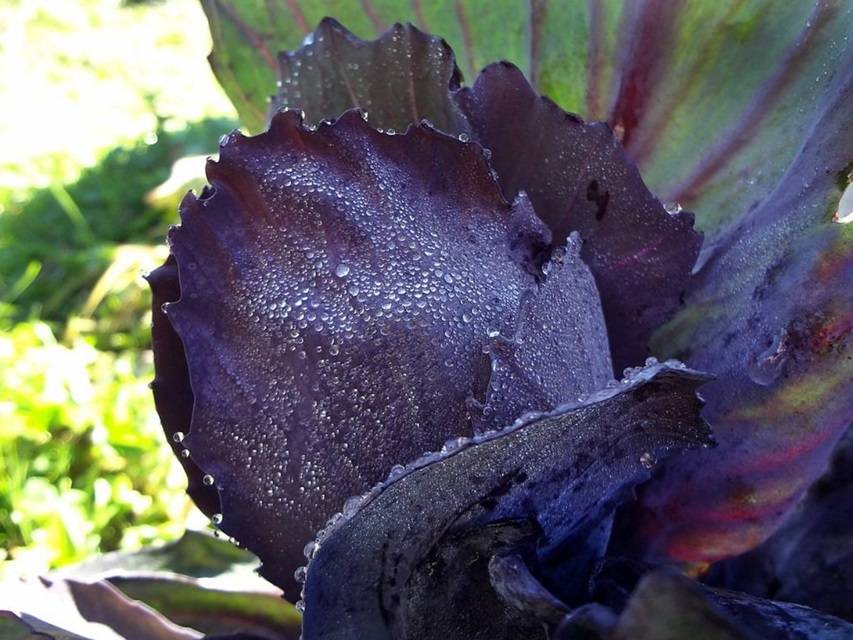Red cabbage is a colorful and nutritious vegetable that belongs to the Brassica family. It is known for its vibrant purple-red leaves, which add a splash of color to salads, slaws, and cooked dishes. Red cabbage is rich in vitamins C and K, fiber, and antioxidants, making it a healthy addition to any diet. This article will guide you through the steps to successfully grow red cabbage in your garden.
Health Benefits
Red cabbage offers numerous health benefits, including:
- Rich in Antioxidants: Contains anthocyanins, which help reduce inflammation and protect against certain diseases.
- High in Vitamin C: Supports a healthy immune system and skin health.
- Excellent Source of Vitamin K: Essential for bone health and blood clotting.
- High Fiber Content: Aids in digestion and helps maintain a healthy weight.
- Cancer-Fighting Properties: Contains compounds that may help protect against certain types of cancer.

Planting
When to Plant
Red cabbage can be grown in both spring and fall. For a spring harvest, sow seeds indoors 6-8 weeks before the last expected frost date. For a fall harvest, sow seeds directly in the garden in mid to late summer, allowing enough time for the plants to mature before the first frost.
Soil Requirements
Red cabbage thrives in well-drained, fertile soil with a pH level between 6.0 and 6.8. The soil should be rich in organic matter to support healthy growth. Adding compost or well-rotted manure to the soil before planting can help improve its fertility and structure.
Planting Instructions
- Indoor Planting: Sow seeds 1/4 inch deep in seed trays filled with a seed-starting mix. Keep the soil consistently moist and place the trays in a sunny location or under grow lights.
- Transplanting: Once seedlings have at least two true leaves and are about 3-4 inches tall, they can be transplanted into the garden. Space the plants 12-18 inches apart in rows spaced 24-36 inches apart.
- Direct Sowing: If sowing directly in the garden, plant seeds 1/4 inch deep and thin seedlings to the same spacing as for transplants once they are large enough to handle.
Fertilization Requirements
Red cabbage benefits from regular fertilization to support its growth. Before planting, incorporate a balanced fertilizer or organic compost into the soil. During the growing season, side-dress with a nitrogen-rich fertilizer every 3-4 weeks. This encourages healthy leaf development, which is crucial for cabbage growth.
When to Harvest
Red cabbage is typically ready to harvest 70-100 days after planting, depending on the variety. Harvest when the heads are firm and reach the desired size. To harvest, cut the cabbage head from the base of the plant with a sharp knife, leaving the outer leaves and roots in place. These can continue to grow and produce smaller heads if conditions allow.
Companion Plants
Companion planting can help improve the growth and health of red cabbage by attracting beneficial insects and deterring pests. Good companion plants for red cabbage include:
- Herbs: Dill, mint, and rosemary can help repel cabbage moths and other pests.
- Flowers: Marigolds and nasturtiums attract beneficial insects and deter pests like aphids.
- Vegetables: Onions, garlic, and potatoes can help improve soil health and deter pests.
Pest Management
Red cabbage is susceptible to various pests, including aphids, cabbage worms, and slugs. Effective pest management strategies include:
- Regular Monitoring: Check plants regularly for signs of pests and remove any that you find by hand.
- Row Covers: Use lightweight row covers to protect young plants from pests.
- Natural Predators: Encourage beneficial insects like ladybugs and lacewings, which prey on common cabbage pests.
- Organic Pesticides: If necessary, use organic pesticides such as neem oil or insecticidal soap to control pest populations.
Summary
Growing red cabbage can be a rewarding experience, providing you with a nutritious and visually appealing vegetable. By following the guidelines for planting, soil preparation, fertilization, and pest management, you can successfully grow red cabbage in your garden. Remember to choose the right time for planting, provide adequate nutrients, and use companion plants to enhance growth and protect against pests. With a little care and attention, you'll enjoy a bountiful harvest of red cabbage.
